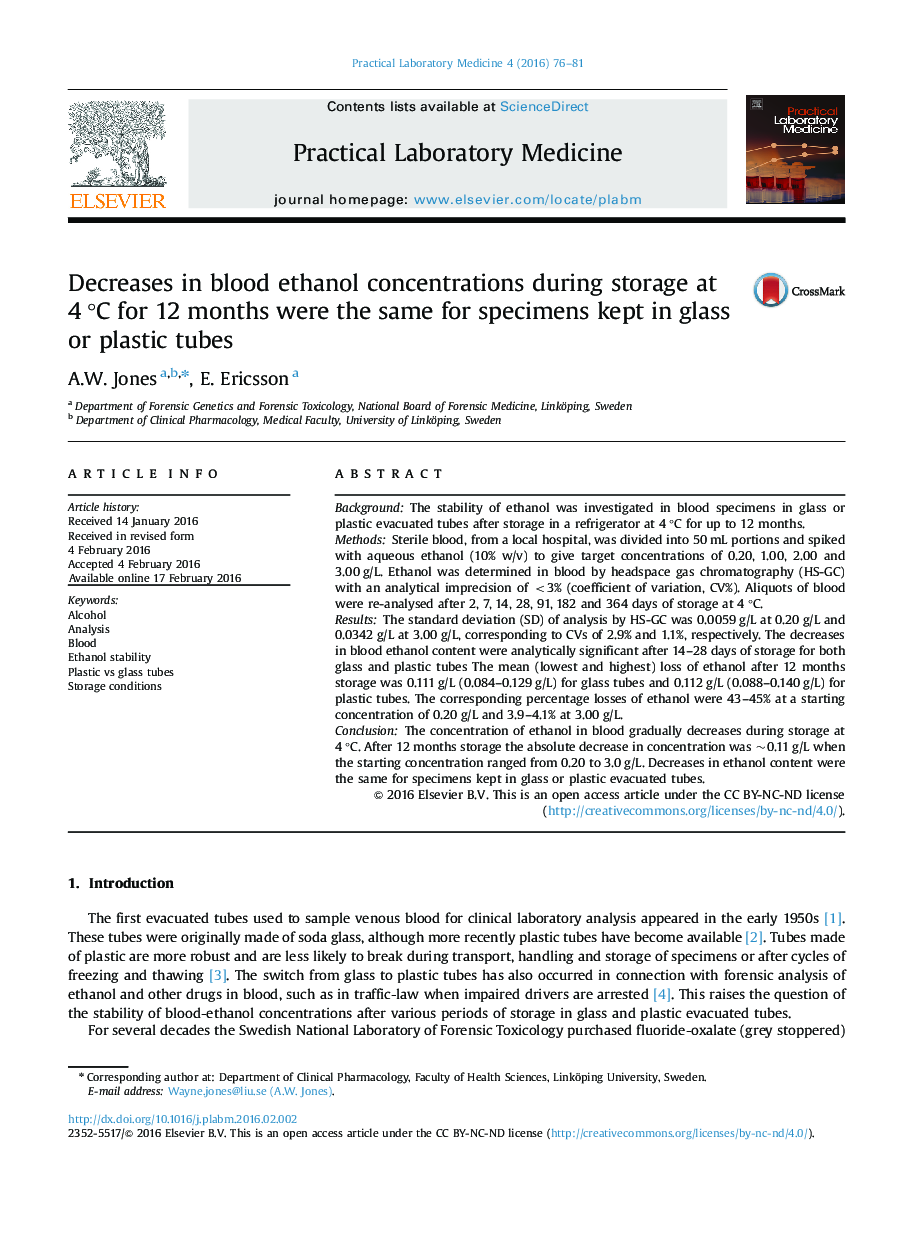| Article ID | Journal | Published Year | Pages | File Type |
|---|---|---|---|---|
| 2777393 | Practical Laboratory Medicine | 2016 | 6 Pages |
BackgroundThe stability of ethanol was investigated in blood specimens in glass or plastic evacuated tubes after storage in a refrigerator at 4 °C for up to 12 months.MethodsSterile blood, from a local hospital, was divided into 50 mL portions and spiked with aqueous ethanol (10% w/v) to give target concentrations of 0.20, 1.00, 2.00 and 3.00 g/L. Ethanol was determined in blood by headspace gas chromatography (HS-GC) with an analytical imprecision of <3% (coefficient of variation, CV%). Aliquots of blood were re-analysed after 2, 7, 14, 28, 91, 182 and 364 days of storage at 4 °C.ResultsThe standard deviation (SD) of analysis by HS-GC was 0.0059 g/L at 0.20 g/L and 0.0342 g/L at 3.00 g/L, corresponding to CVs of 2.9% and 1.1%, respectively. The decreases in blood ethanol content were analytically significant after 14–28 days of storage for both glass and plastic tubes The mean (lowest and highest) loss of ethanol after 12 months storage was 0.111 g/L (0.084–0.129 g/L) for glass tubes and 0.112 g/L (0.088–0.140 g/L) for plastic tubes. The corresponding percentage losses of ethanol were 43–45% at a starting concentration of 0.20 g/L and 3.9–4.1% at 3.00 g/L.ConclusionThe concentration of ethanol in blood gradually decreases during storage at 4 °C. After 12 months storage the absolute decrease in concentration was ~0.11 g/L when the starting concentration ranged from 0.20 to 3.0 g/L. Decreases in ethanol content were the same for specimens kept in glass or plastic evacuated tubes.
